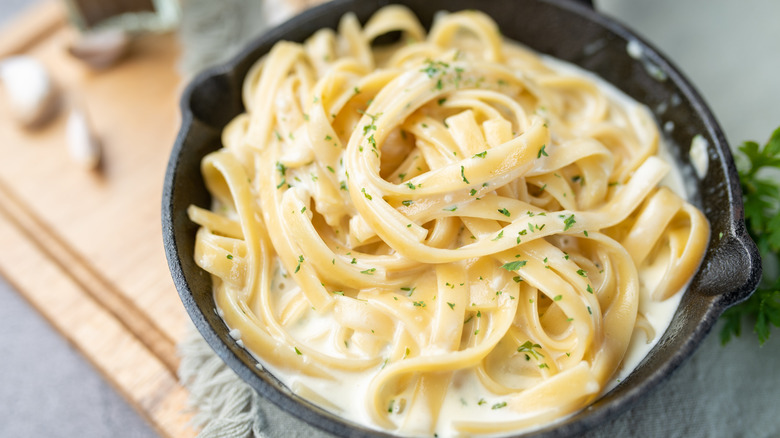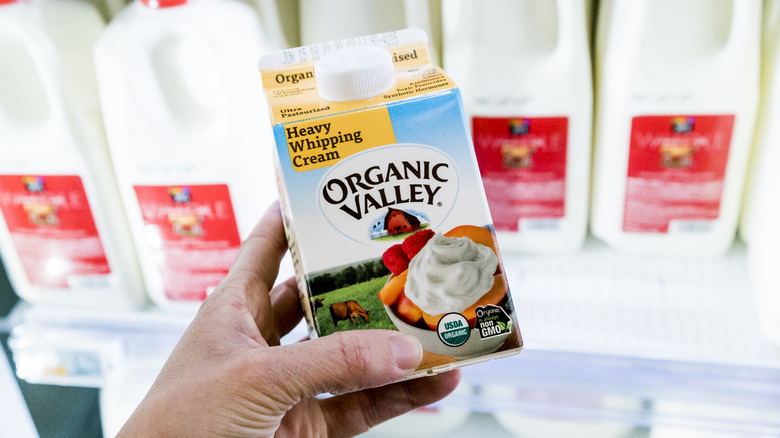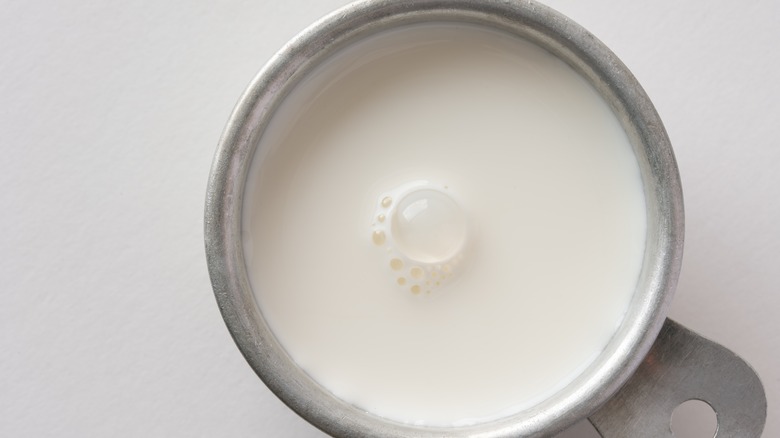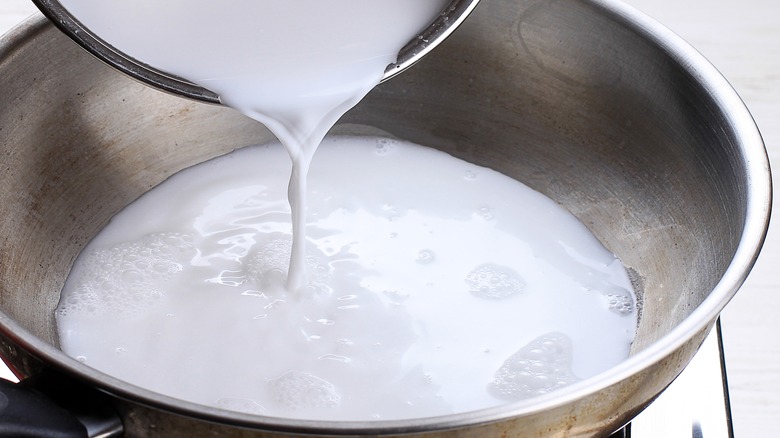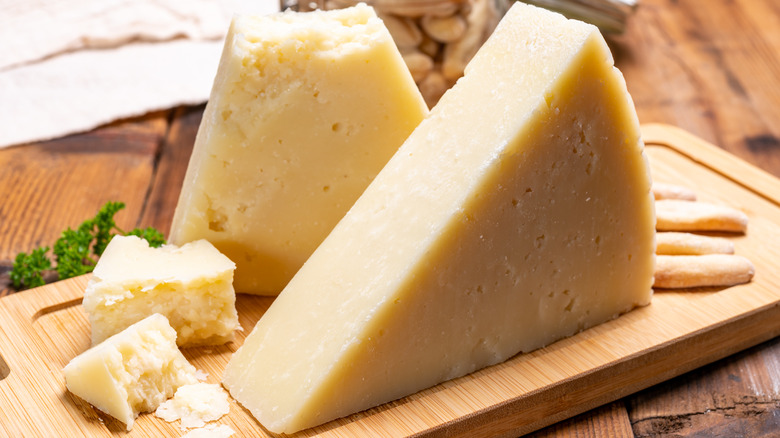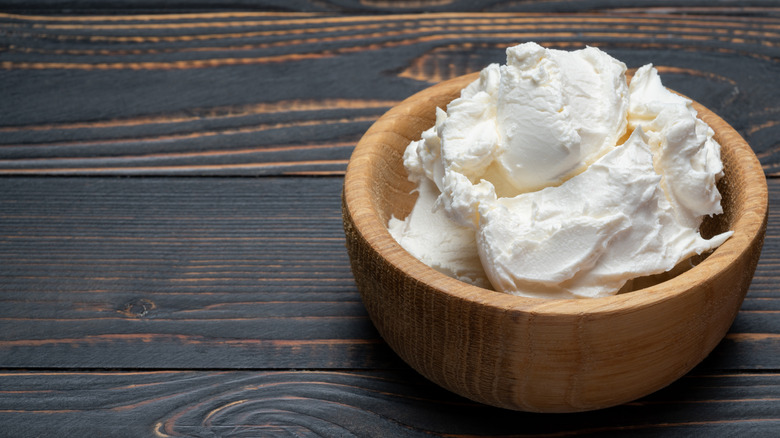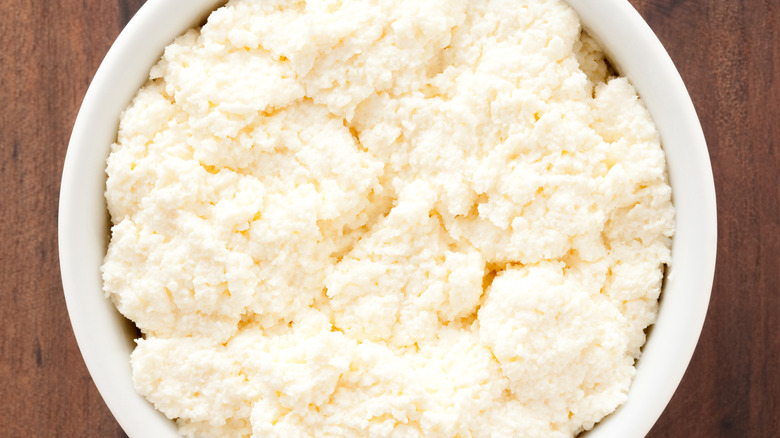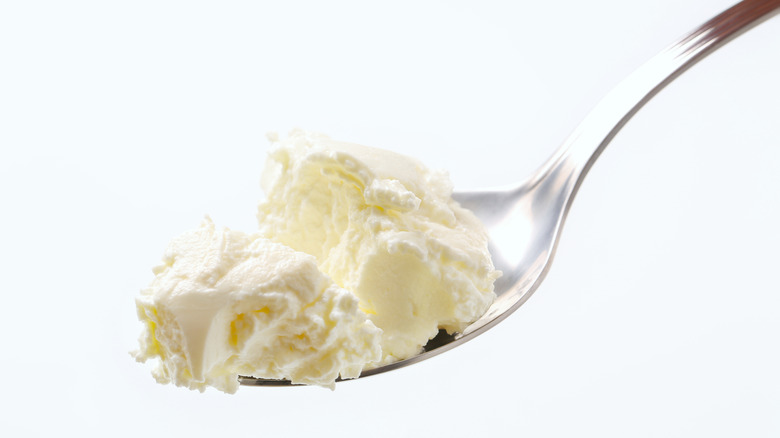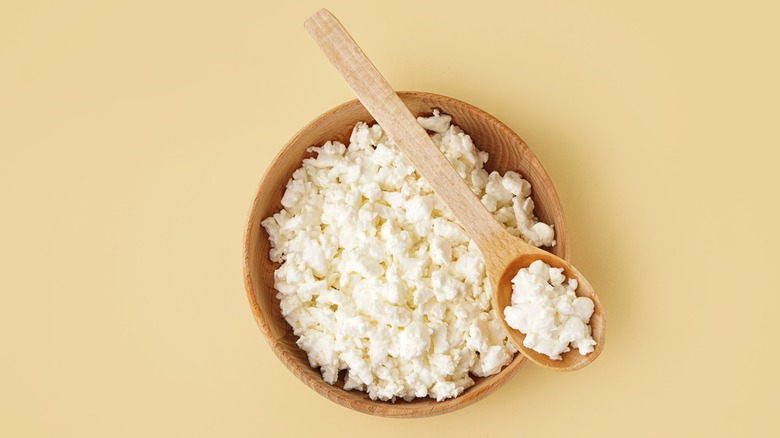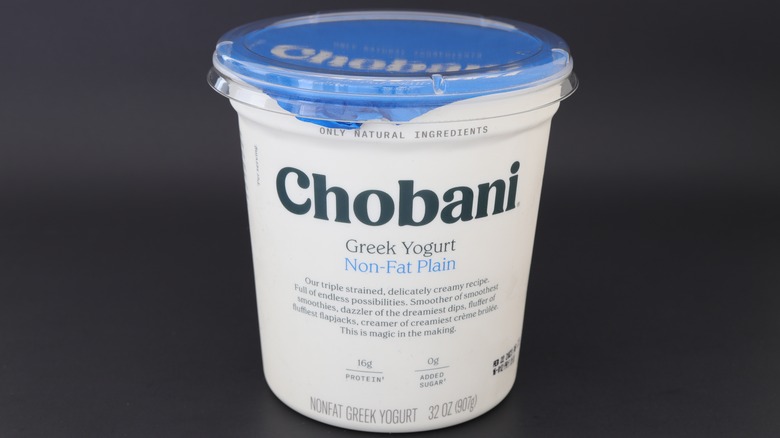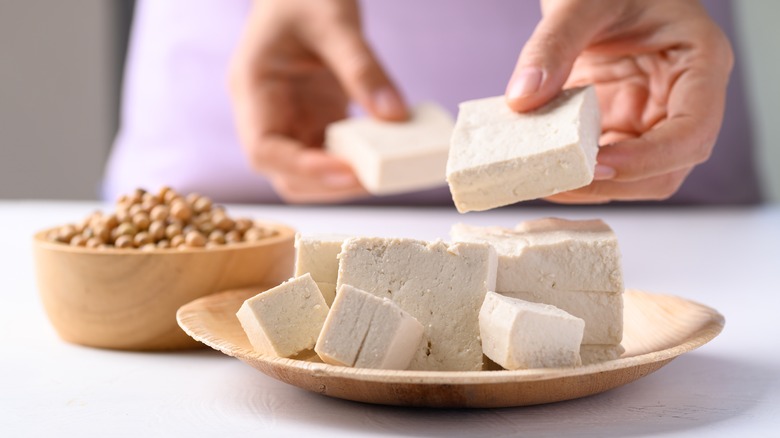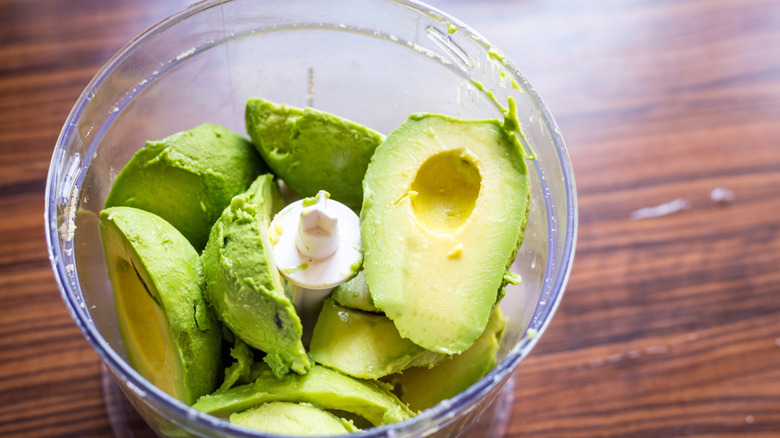Ingredients To Add For A Creamy Pasta Sauce
When you think of creamy pasta sauce, Alfredo may be the first thing that comes to mind, but it is much more versatile than that. Creamy pasta sauces are rich and flavorful when made correctly, and, lucky for us, there are numerous ways to make them. A classic way to make a creamy pasta sauce uses heavy whipping cream, but the desired texture can be achieved with many ingredients. From milk to cheese to healthy vegan options like avocado and tofu, you may be surprised at how many ingredients you can use to make a pasta sauce creamy.
After extensive research, I came up with the following list of ingredients that you can use to make pasta sauce creamy. While investigating the best methods and components, I referenced countless chef recommendations and popular recipes online. I also compared the information I found to my experience making creamy pasta sauces at home and my 20 years of experience working in restaurants. Keep reading to learn about ingredients to add to a creamy pasta sauce to unlock a new cooking skill and make creamy pasta like a pro.
Heavy cream
The most common ingredient used to make pasta sauce creamy is heavy cream. Traditionally, it is used to make fettuccine Alfredo and a myriad of other creamy sauces because it has a thick texture and, as the name suggests, is creamy. It also has a mild taste that blends well with a world of flavors, so it won't overpower the other spices and elements in a dish. Instead, it complements almost any pasta sauce you can think of to perfection.
Aside from its widespread use in traditional recipes, heavy whipping cream is super easy to add to a sauce, so you have nothing to lose. You can simply add a tablespoon or two to basil pesto and stir to make it rich and creamy. You can also do the same to transform marinara into a tomato cream sauce. Or, if you want the ultimate level of creaminess, you can make an alfredo sauce with heavy cream as the base. Start by heating the cream in a shallow pan. When it starts to steam, mix in butter, cheese, and spices and stir until you achieve the desired consistency and flavor. If you are looking for heavy cream in the store, remember that heavy whipping cream is the same product, and you shouldn't have any problems finding it.
Half and half
Adding half and half is another fantastic way to make pasta sauce creamy. It is similar to whipping cream but with less milk fat, so it isn't a big jump from the classic creamy enhancement. According to the FDA, heavy whipping cream contains 36% milk fat or more. Whereas half and half contains between 10.5% and 18% milk fat. With this in mind, half and half won't be as thick or rich as whipping cream, but it still works exceptionally well when making creamy pasta sauces. The reduced amounts of milk fat also mean that it is a slightly healthier option, and considering creamy sauces aren't generally regarded as healthy, a little difference can go a long way.
Half and half is such a good option that many popular recipes use it to make a creamy sauce. For example, half and half is the ideal ingredient for Andrew Carmellini's pappardelle with white bolognese recipe. Even if a recipe you are eyeing calls for heavy cream, you can easily substitute half and half. You shouldn't have to use any more than the original recipe, but the finished sauce will likely be slightly less dense. Chances are, you won't even notice a difference, though.
Milk
As you may have guessed by now, milk can also be added to make a creamy pasta sauce. Considering that milk is defined by the FDA as containing not less than 3.25% milk fat, it won't be as thickening as half and half or heavy cream, but it is still a top option, especially when it is mixed with other ingredients, like cheese and butter. An excellent example of this is mac and cheese. Milk combined with cheese and butter leads to a gooey, creamy sauce loved by all. You can also mix milk with olive oil, flour, or cornstarch to help thicken up a sauce and enhance creaminess.
One of the best things about using milk to make a sauce creamy is that it comes in many different forms. Evaporated milk is used in various recipes, like Taleggio mac and cheese, and, of course, there's whole, 2%, and skim milk. However, there is also an abundance of different kinds of milk that don't come from cows. From soy to almond to oat milk, they all work great in pasta sauce. Coconut milk is also a common ingredient used to make sauce creamy in Asian cuisine. Some pho broths use coconut milk and Thai curry, which can be served on rice or noodles, and also include coconut milk to get a creamy taste and texture.
Parmesan and pecorino romano cheese
Aside from milk and cream products, cheese is the next most popular ingredient used to create creamy pasta sauce and Parmesan and pecorino romano are classic picks. While both cheeses are pretty similar in taste and consistency, parmesan is typically nuttier, and pecorino romano is generally sharper and saltier. Even so, they can be used interchangeably. You can often find them pre-grated and blended, but grating or shredding your own ensures you get the freshest, most flavorful results.
Both Parmesan and pecorino romano are frequently used in Italian cooking, and they are almost always used to garnish pasta. They also have a rich taste with a bit of a bite, making for drool-worthy flavor in a sauce. Parmesan and pecorino romano are considered to be some of the main ingredients in alfredo sauce. As mentioned above, cheese is often paired with milk in pasta sauce, but it doesn't have to be that way. Pasta cacio e pepe, which is known for its simple creaminess, is made with olive oil, Parmesan, romano, and black pepper. In addition to these hard cheeses, a shredded Italian blend of cheeses with smoked provolone and fontina also works well in pasta sauce.
Mascarpone cheese
The rich texture of mascarpone cheese easily makes sauces creamy. If you are unfamiliar with mascarpone, think of it like the Italian version of cream cheese. Mascarpone cheese is made with butterfat and has a 75% fat content. In contrast, American cream cheese has a 55% fat content and is made with whole milk or heavy cream. They have a similar consistency and flavor, but mascarpone is more buttery and velvety than American cream cheese. As a result, using it in pasta sauce leads to a decadently creamy texture.
Using mascarpone cheese to make the sauce creamy is as easy as adding a couple of spoonfuls to a pre-made sauce, like marinara or various pestos. Its velvety texture also makes for a great pasta sauce base. You can substitute it for Parmesan and romano in alfredo, add it to béchamel, or even mix it into cheesy pasta bakes. If you choose to substitute mascarpone for another cheese in a recipe, keep in mind that it has a softer texture and more liquid, so you may want to cut back on any milk or cream in the recipe to counterbalance the ingredients and get the right consistency.
Ricotta cheese
Ricotta is another creamy cheese that makes good pasta sauce. It is velvety in texture, and unlike other cheeses, it doesn't separate or become oily when heated up. It also clings to pasta well, so making sauce with it just makes sense. You probably think of ricotta as the filling for stuffed pasta like ravioli, tortellini, manicotti, lasagna, and more. Still, if you get creative, it is a fantastic option for both inside and outside pasta. Its mild, slightly nutty taste complements traditional pasta dish ingredients and blends in super well with Italian flavors.
Giada De Laurentiis uses ricotta cheese as a fresh alternative to heavy Alfredo sauce. The result is kind of like a creamy white pesto, and it is delicious. If you're looking for something less involved, adding a couple of spoons of softened ricotta cheese to a pre-made pesto or marinara sauce makes them creamy with almost no effort at all. For the utmost decadence, you could also try putting whipped ricotta underneath your pasta to ensure every bite you take is rich and creamy to the max.
Cream cheese
While a bit denser than its Italian counterpart, mascarpone cheese, cream cheese is frequently used in American recipes to make pasta dishes creamy. It has a similar effect to making bechamel but without all the additional steps. Plus, oil from cream cheese won't separate when reheated, as is common with béchamel and other soft cheeses. It is also a great cheese to add to baked pasta dishes, like a classic baked mac and cheese.
Plain cream cheese is typically best when it comes to making creamy pasta sauce. It has a slightly tangy, salty taste that compliments pasta super well. It also goes great with classic pasta add-ons like basil, tomato, onion, garlic, and Italian spices. If you want to experiment with flavors, sun-dried tomato cream cheese tastes excellent with marinara sauces and pestos. Olive pimento-flavored cream cheese makes a wonderful addition to puttanesca sauce. Garlic herb and scallion flavors also pair well with various pasta sauces.
Whatever flavor you choose to use in your pasta sauce, cream cheese will be easier to work with if you let it sit out of the refrigerator long enough for it to soften. Depending on the size of the container, anywhere from 30 minutes to an hour should suffice. When appropriately softened, cream cheese should be mixed into a heated sauce quite easily.
Sour cream
Stroganoff is another popular creamy pasta sauce, but it doesn't call for the usual Italian cheeses or creams to achieve its velvety texture. Instead, it uses sour cream. While the origins of stroganoff are debated, it is generally considered to be French with Russian influences. Regardless of how it was invented, stroganoff typically contains sauteed beef or mushrooms in a creamy sour cream sauce with a touch of mustard served over pasta. Rich and hearty by nature, stroganoff is a perfect example of how to make a creamy pasta sauce with sour cream. You could even make a vegan mushroom stroganoff using vegan sour cream and coconut milk.
In addition to stroganoff, you can easily add sour cream to Italian-style pasta sauces and baked pasta dishes to achieve an equally creamy texture. Just remember that sour cream is, well, somewhat sour, so it has a much tangier flavor profile than cream or cheese like ricotta. Thankfully, it is already soft, too, so mixing it into a pasta sauce is super easy and doesn't require any time to soften.
Cottage cheese
Along the same lines as sour cream, cottage cheese has a velvety texture and tangy taste, making it an incredible addition to creamy pasta sauce. It isn't smooth like other soft cheeses because it comes in curds, but when mixed with other ingredients and heated, it blends in and becomes decadently silky. The main difference between it and other options on our list is its pungent smell. While it may not be for everyone, it undeniably can be used to help make pasta sauces super creamy.
Compared to other options on our list of creamy ingredients, cottage cheese is relatively low in calories. So, cottage cheese could be just what you are looking for if you seek a more health-conscious creamy pasta option. Cottage cheese also contains nine essential amino acids, making it a good source of high-quality protein. It is also a good source of B12, riboflavin, and selenium, leading to a myriad of potential health benefits. As a result, using cottage cheese in pasta sauce, particularly low-fat and low-sodium options, is a nutritious alternative to rich cheeses and heavy cream. Additionally, combining cottage cheese with your pasta sauce is as easy as mixing it in, so it takes almost no time at all.
Greek yogurt
You may have heard of people using plain Greek yogurt in place of mayonnaise or sour cream, but it is actually pretty versatile and goes great with pasta sauce, as well. Greek yogurt is thicker and much creamier than regular yogurt. It also has a tangier, less sweet flavor. As such, it blends into various pasta sauces and makes them incredibly creamy. Just like cottage cheese, it is also a healthy alternative to classic creamy ingredient additions. Greek yogurt is a good source of protein and essential nutrients such as B12, calcium, selenium, and zinc. So, if you want to increase nutrition, it is an outstanding option.
There are a few do's and don'ts to cooking with Greek yogurt, but it can easily be substituted in recipes that call for buttermilk or heavy cream, pasta sauce included. Using equal amounts should do the trick in most recipes. However, watering it down a bit is recommended because it is significantly thicker than cream. That way, you will have similar consistencies and accurate results. Or, if you already have a pesto or marinara sauce made, you can add a few spoonfuls of Greek yogurt to quickly turn it creamy.
Tofu
Tofu is well known for being a versatile plant-based food loved by vegans and vegetarians. It makes a fantastic meat alternative and conveniently soaks up any flavors you prepare it with, so it can go in just about anything. While you have probably heard of a ton of tasty tofu recipes before, you may be surprised to learn that it can also be used in pasta sauces to make them creamy. However, if you think about it, tofu is made from soy milk, so it kind of makes sense.
Tofu comes in blocks when you buy it at the store, so unless you're making fresh homemade tofu, it'll require a bit of prep work to get it ready for mixing into a pasta sauce. Don't worry, though, All you have to do is add a splash or two of milk and blend until it becomes smooth and creamy. Of course, if you want to make it vegan, just use soy milk. Either way, once blended, you can substitute it for cream in any recipe you like or simply add it to a premade sauce.
Avocado
Last but not least on our list of ingredients to add to a creamy pasta sauce is another unexpected one: avocado. Its texture and flavor make for a deliciously creamy, flavorful pasta sauce. It is an excellent alternative to cream for vegans, but the bright taste and velvety consistency make it a must-try for all dietary preferences.
It may initially sound a bit complicated, but making avocado cream pasta sauce is relatively easy. Simply blend olive oil, garlic, and lemon juice until smooth, add cored and sliced avocados, and blend again until creamy. You don't even need to heat it up. When it's ready, just toss it with cooked pasta, and it is ready to go. To get the best results, make sure to use super ripe, soft avocados. If you use hard avocados, the sauce won't be as velvety, and you may need to add more liquid to the mix to get the desired results.
Avocados are also really good for you. They are nutrient-dense and pose several health benefits, like supporting heart health, lowering cholesterol, keeping eyes healthy, and regulating appetite. So, if you want to try something new and stay on the healthy side, adding avocados to make creamy pasta sauce is a no-brainer.

